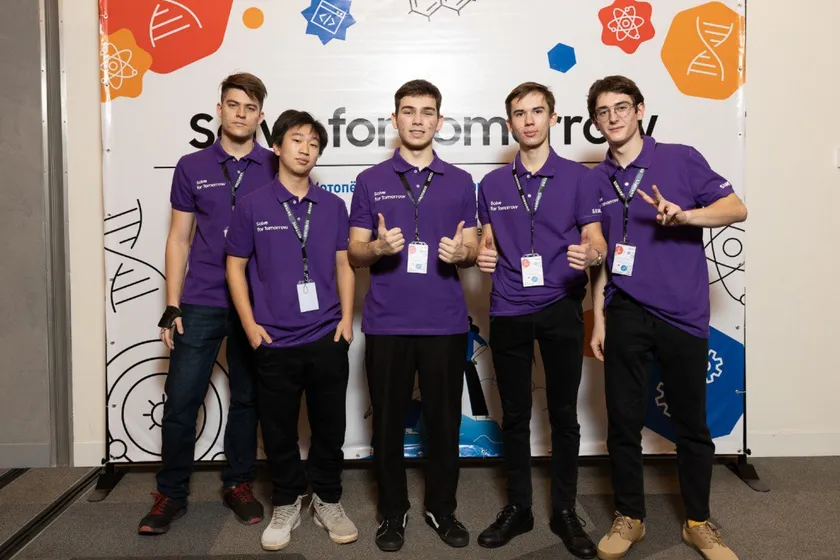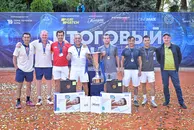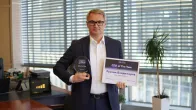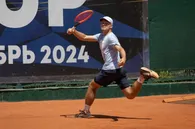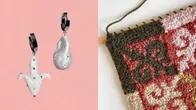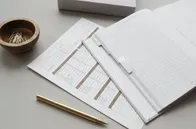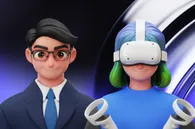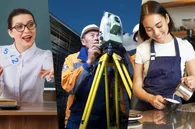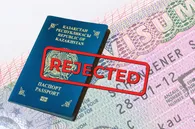A small group of high school students from Taldykorgan are developing a headgear that uses 3D sound technology to help blind and partially sighted people to navigate through everyday life. Their startup, See the Future, has already received support from the Kazakh Society of the Blind (Казахское Сообщество Слепых), who provides regular feedback in the test runs.
The founders - Maxim Surin, Viktor Kakhno, and Deni Mirkhayat - are students at Nazarbayev Intellectual School of Physics and Math, where they receive all the support they need for their project. Maxim handles the financial matters and management while the market research and branding are Deni’s responsibilities. Viktor is the technical engineer.
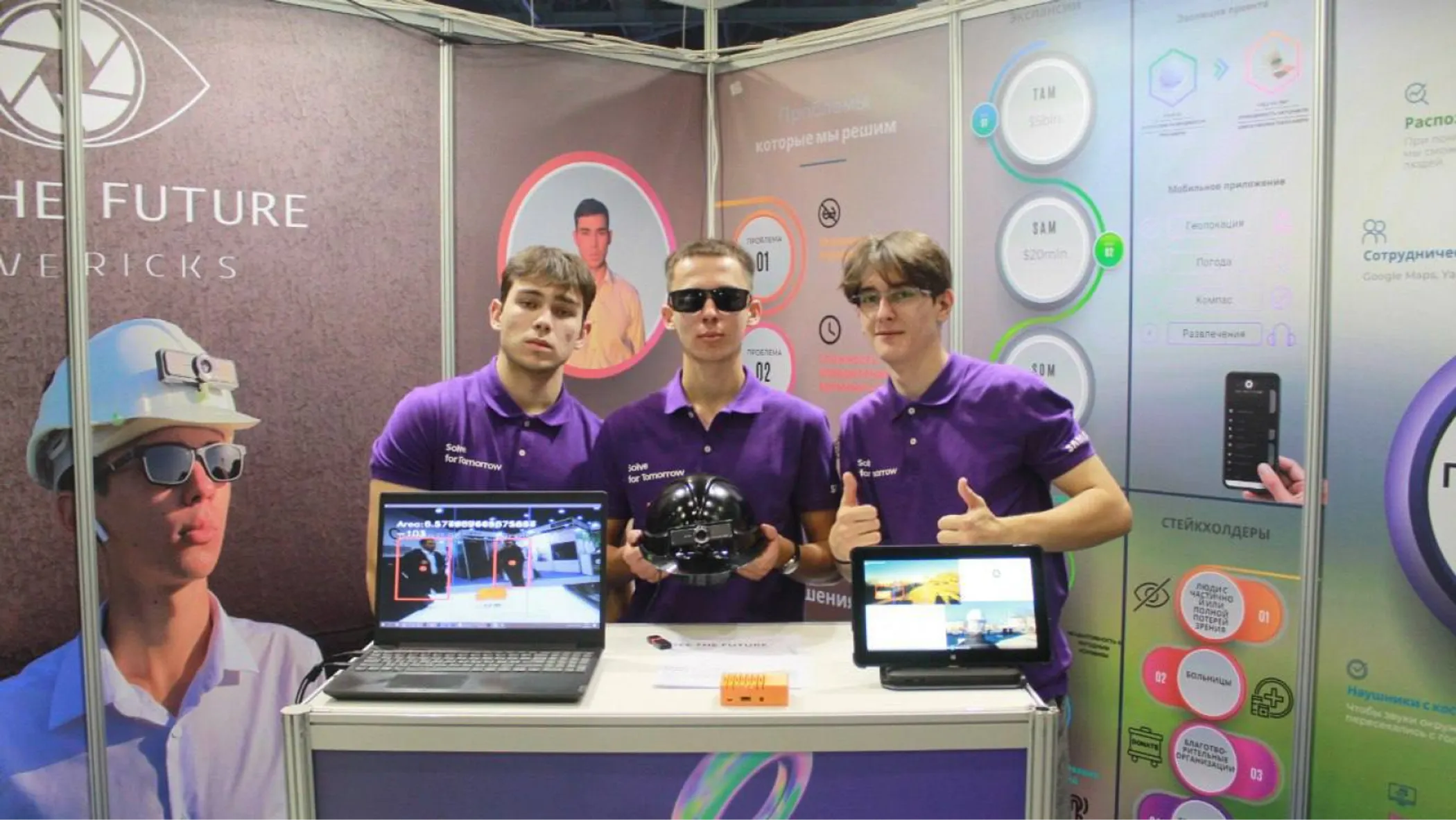
The team recently participated in the Digital Bridge 2022 tech forum in Astana, where they spoke to a QazMonitor correspondent about the startup and its future prospects.
To Venture Into the Void
Q: How did you come up with this idea?
М. We took part in a contest where we had to come up with an idea for a social cause. After brainstorming, we decided that the problems blind and partially sighted people face in Kazakhstan are in particular need of a solution. We practically have no developed infrastructure for them. If we take Taldykorgan as an example, there is only one street that is designed to be accessible and that’s Arbat. This has been confirmed by the blind community in our survey.
According to them, to venture beyond Arbat is like walking in a blank space without a sense of where things are. Our idea is to help the blind without using guide dogs or personal attendants.
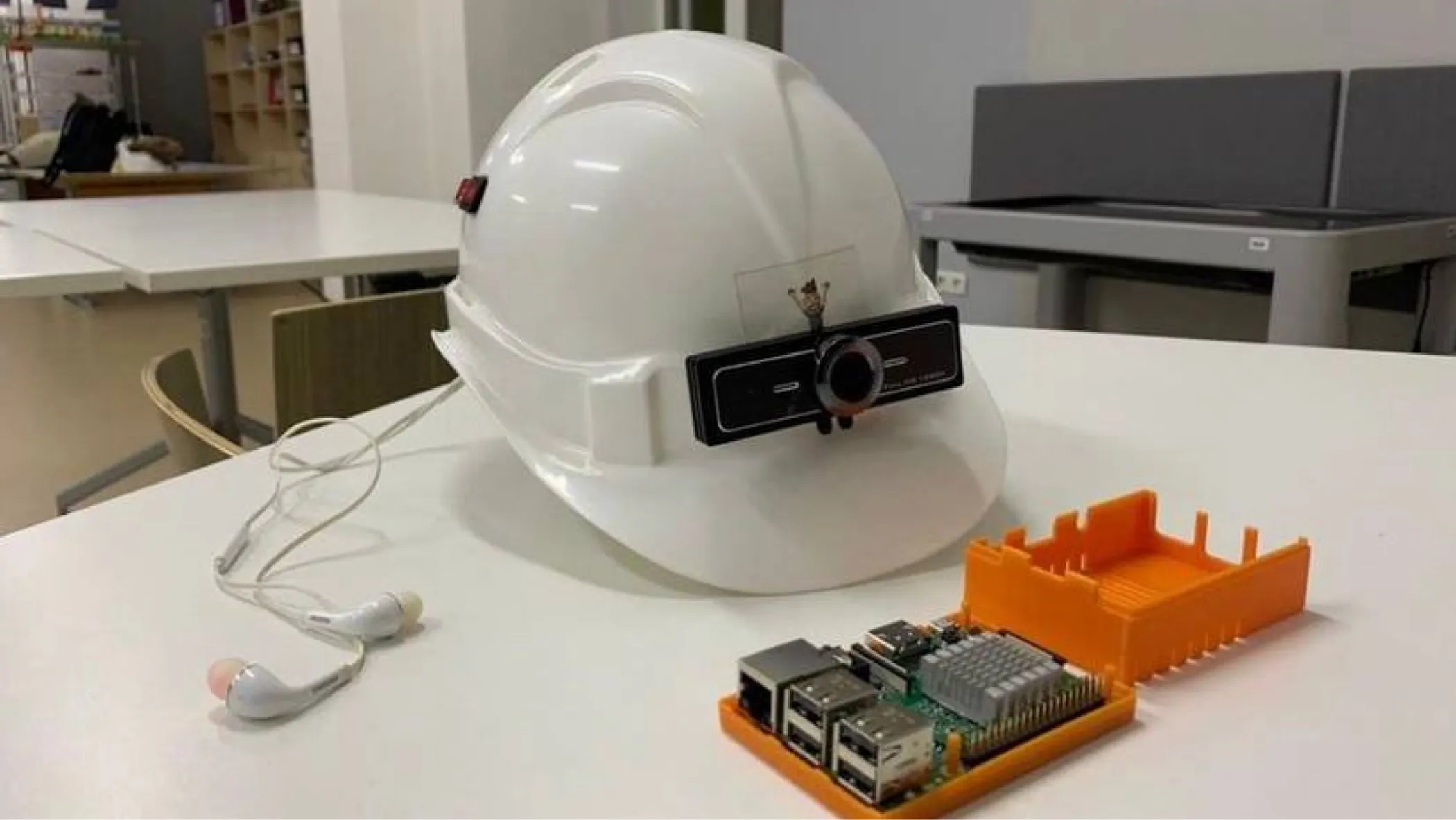
Q. Can you describe the technology behind your project?
V. There is a similar device called Sezual that is popular in Kazakhstan. It appeared on the market about five years ago, but technology-wise it’s much simpler than ours. The device is strapped to the chest and produces clicking sounds, so the person relies on echolocation to navigate. We thought it’s a bit difficult to use.
Our helmet uses a camera to transmit visual information in real-time to a Raspberry Pi board, which is a microcomputer. The board sends the video stream to a server or any powerful computing device with an installed neural network that can identify objects in an environment. The network sends the signal back to the RP board, which then produces a sound directly in the person’s headphones.

D. We approached the Society for the Blind when we first came up with our idea and received valuable feedback. They said the form factor of the device would be a little uncomfortable and that the audio feedback in the headphones would interfere with the sounds in their surroundings. We did our best to come up with solutions for these issues.
V. Since it’s important for blind people to listen to their sound environment, we wrote special code in Python that allows our device to transmit sounds to the headphones while letting outside noise in. Kind of like Apple's Transparency mode.
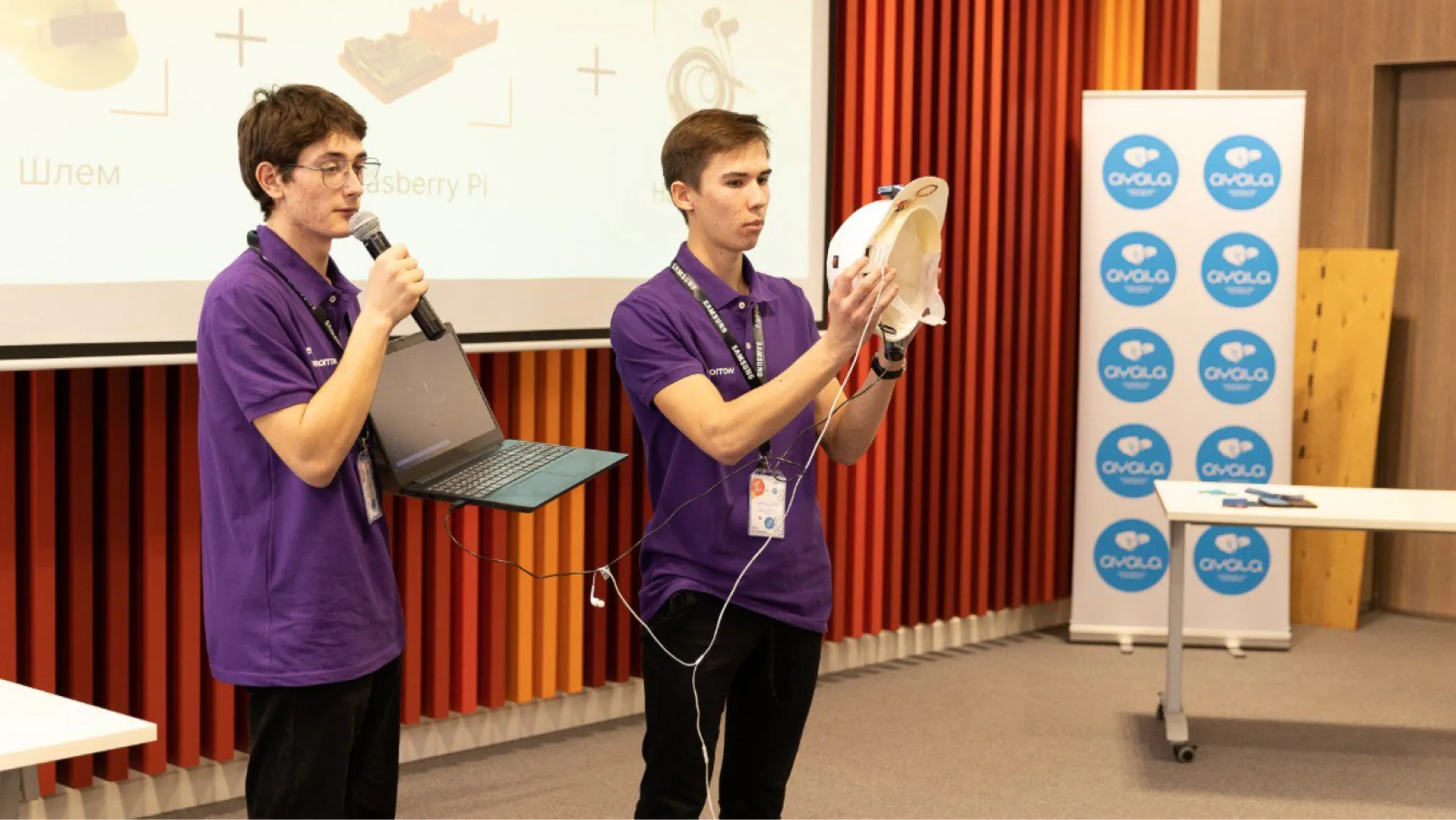
Soundscape Vision
Q. What was the product development process like?
V. Initially, we wanted to design a cane, but then decided on a helmet. Our first helmet had three cameras – one on the front and two on the sides – that would allow you to have about a 270-degree visual scope. Later on, we realized it was very difficult to analyze the data from all three cameras because it required more power. We eventually came to an agreement that it’s enough to have a 180-degree view, which is roughly the same as the visual span of a human eye. We replaced the three cameras with one wide-angle camera.
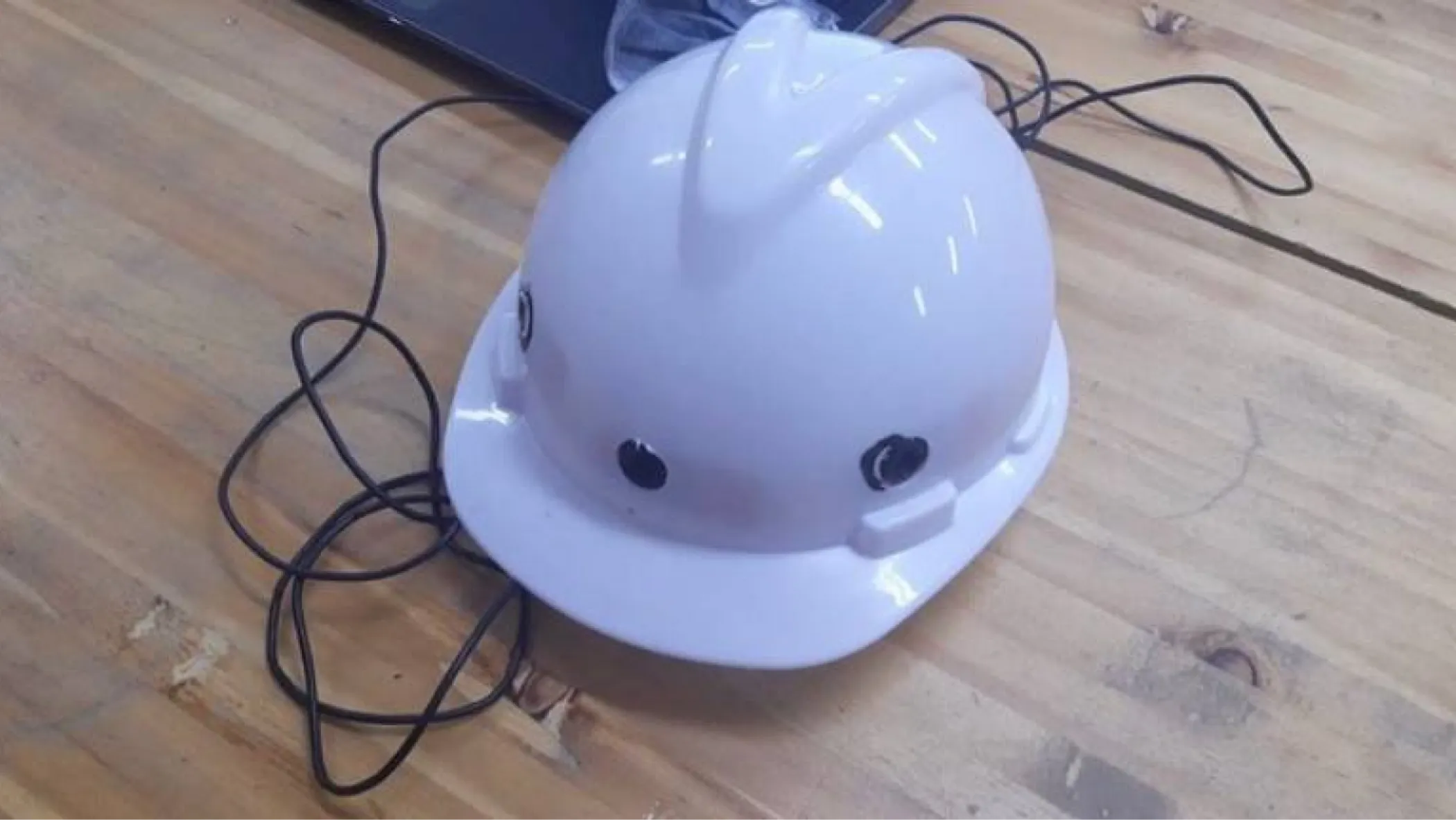
Q. Seems like there was a lot of trial and error.
M. We had to conduct three tests before switching to a single-lens helmet. The first test was to measure the weight of the helmet. One of our members wore the helmet for an entire day. It turned out to be somewhat uncomfortable at first, but over time the feeling disappeared. We tested the navigation system next. A member put on opaque glasses and then tried to navigate a small courtyard with only the helmet’s voice prompts. We will conduct our third experiment after integrating the new camera we have recently purchased called RealSense.
V. Yes, RealSense has a built-in lidar sensor that is used to determine the distance between the subject and the surrounding objects via infrared waves. It can see up to ten meters. With its help, we are planning to change the voice prompts since it can only give basic prompts, like "you are approaching a traffic light", "there’s a car on your right", etc. We will change the prompts to short clicking sounds so that each object that appears in the camera's field of vision will have its own click frequency.

If a person is "pip-pip", then a car is "pum-pum". The volume will change depending on how far away those objects are and the direction of the sound will be determined by the object’s position relative to the person.
With 3D sound, the user will be able to ‘see’ their surroundings with their ears.
Navigating Business Growth
Q. You must have received a lot of support to be able to develop something like this.
D. We often stayed at school till late working on our project. That was a huge support from the school. Plus, the helmet was made thanks to the knowledge and skills our robotics teacher passed on to Viktor.
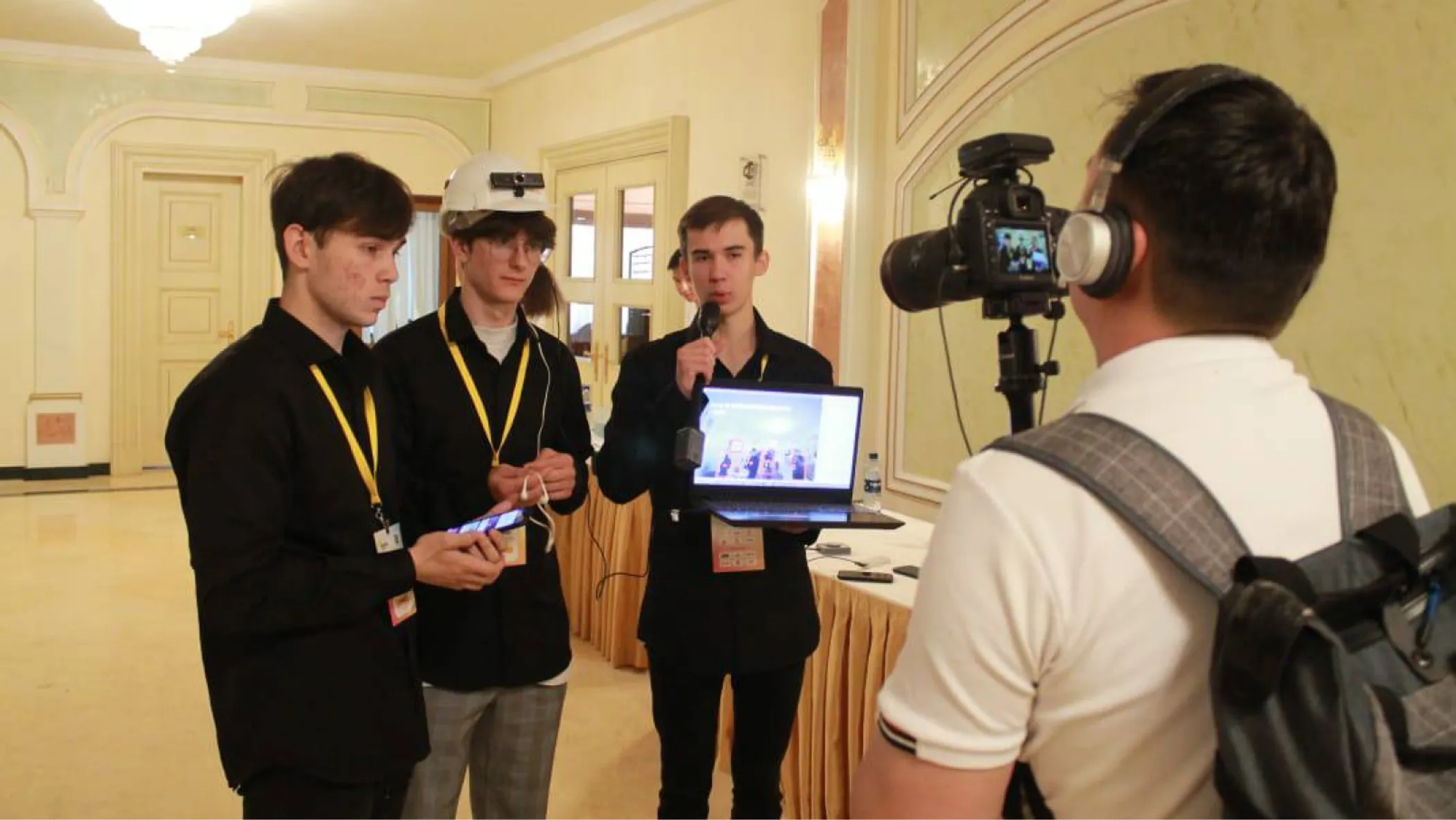
V. Our teacher allowed us to use of the school materials, like the Raspberry Pi board. We also went to Astana at the school’s expense and took first place in Enactus, a program that offers business opportunities for school students. Lastly, the vice president of the Zhetysu region’s Kazakh Society of the Blind made it possible for us to do interviews and visit events.
Q. How did you come to participate in Digital Bridge?
M. By complete coincidence, I saw that Digital Bridge will be held in Astana on my Instagram feed. We thought: “Why not apply?” We made it to the semi-finals of the Astana Hub Battle. The contest was large-scale and international, so I think our project was still underdeveloped. We were competing with startups that were already making money. Still, it was a great networking opportunity for us.
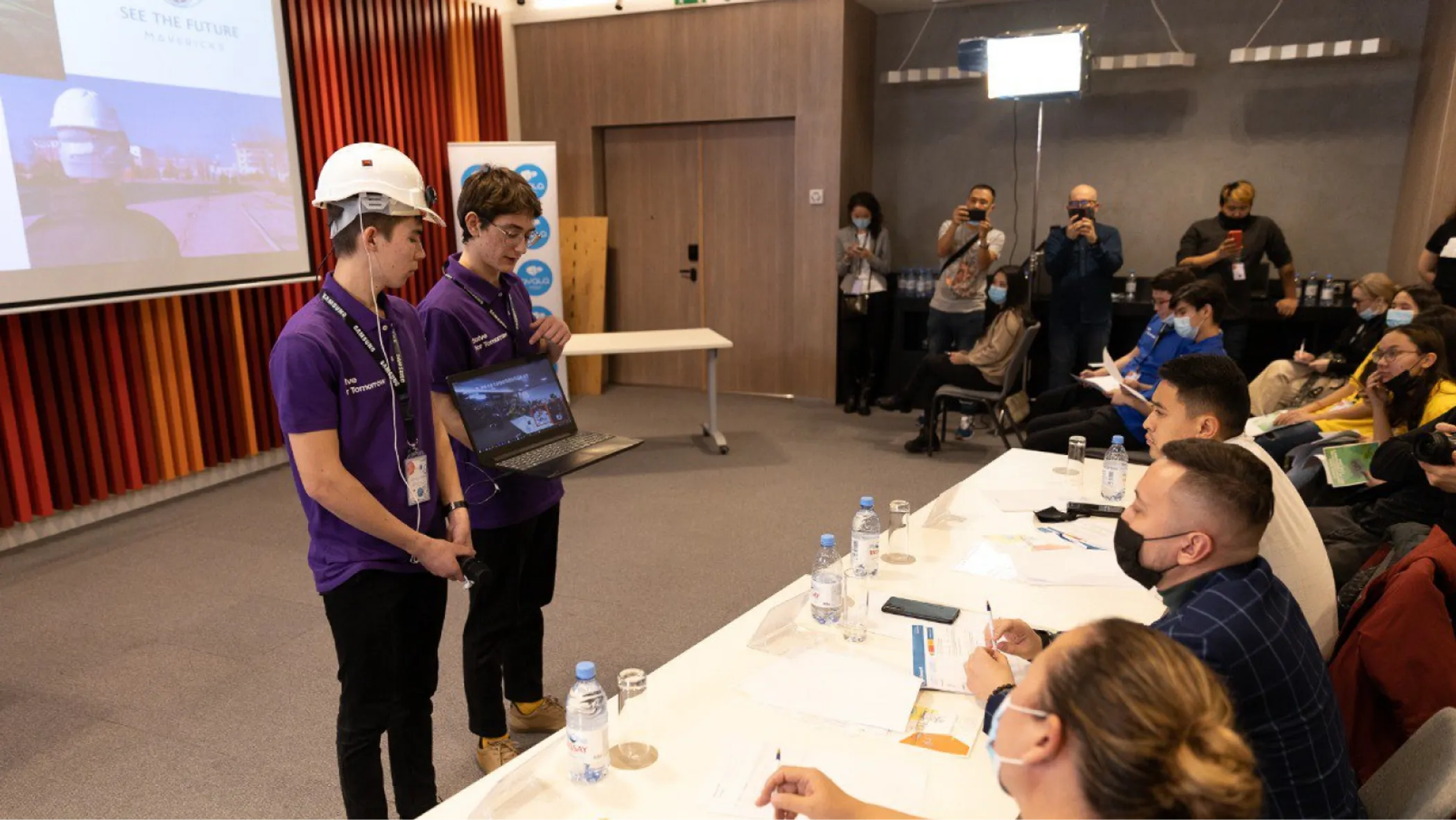
People who managed hospitals approached us with proposals to implement our technology for the blind, so they could navigate within the hospital premises.
A lot of venture capitalists and foundations came up to us with offers to collaborate. Right now, we are considering options that include the possibility of finalizing the product through acceleration.
What Do You See in the Future?
Q. What is the marketing strategy for your project?
D. We are only on Instagram at the moment. Most of our subscribers are from our city. If we have any news, we announce it on our page. For example, currently, we are participating in Beeline’s business incubator. This is so that our audience can follow our progress and achievements. For now, this is the best we can do in terms of marketing.
Q. You mentioned that the team was bigger at the start, but now it’s just you three. Will you be able to continue this project after graduation?
M. Even if we go to different countries, we can work on the project online, I think.
It's possible that we will be able to assemble smaller teams in different cities and keep in touch with each other. The tech will still be on Viktor, I’ll be in charge of the organizational matters, and Deni will scale us up with the marketing. We will try to evolve in that sense, and maybe there is an advantage to conducting experiments in three cities.
